Keap1 is a redox-regulated substrate adaptor protein for a Cul3-dependent ubiquitin ligase complex
- PMID: 15572695
- PMCID: PMC533977
- DOI: 10.1128/MCB.24.24.10941-10953.2004
Keap1 is a redox-regulated substrate adaptor protein for a Cul3-dependent ubiquitin ligase complex
Abstract
The bZIP transcription factor Nrf2 controls a genetic program that protects cells from oxidative damage and maintains cellular redox homeostasis. Keap1, a BTB-Kelch protein, is the major upstream regulator of Nrf2 and controls both the subcellular localization and steady-state levels of Nrf2. In this report, we demonstrate that Keap1 functions as a substrate adaptor protein for a Cul3-dependent E3 ubiquitin ligase complex. Keap1 assembles into a functional E3 ubiquitin ligase complex with Cul3 and Rbx1 that targets multiple lysine residues located in the N-terminal Neh2 domain of Nrf2 for ubiquitin conjugation both in vivo and in vitro. Keap1-dependent ubiquitination of Nrf2 is inhibited following exposure of cells to quinone-induced oxidative stress and sulforaphane, a cancer-preventive isothiocyanate. A mutant Keap1 protein containing a single cysteine-to-serine substitution at residue 151 within the BTB domain of Keap1 is markedly resistant to inhibition by either quinone-induced oxidative stress or sulforaphane. Inhibition of Keap1-dependent ubiquitination of Nrf2 correlates with decreased association of Keap1 with Cul3. Neither quinone-induced oxidative stress nor sulforaphane disrupts association between Keap1 and Nrf2. Our results suggest that the ability of Keap1 to assemble into a functional E3 ubiquitin ligase complex is the critical determinant that controls steady-state levels of Nrf2 in response to cancer-preventive compounds and oxidative stress.
Figures


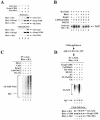
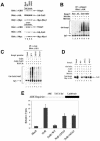
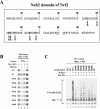
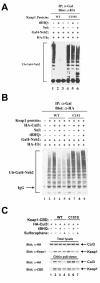
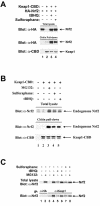
References
-
- Alam, J., E. Killeen, P. Gong, R. Naquin, B. Hu, D. Stewart, J. R. Ingelfinger, and K. A. Nath. 2003. Heme activates the heme oxygenase-1 gene in renal epithelial cells by stabilizing Nrf2. Am. J. Physiol. Renal Physiol. 284:F743-F752. - PubMed
-
- Ames, B. N., and M. K. Shigenaga. 1993. DNA and free radicals, p. 1-15. In B. Halliwell and O. I. Aruoma (ed.), Oxidants are a major contributor to cancer and aging. Ellis Horwood, New York, N.Y.
-
- Andreassi, M. G. 2003. Coronary atherosclerosis and somatic mutations: an overview of the contributive factors for oxidative DNA damage. Mutat. Res. 543:67-86. - PubMed
-
- Aoki, Y., H. Sato, N. Nishimura, S. Takahashi, K. Itoh, and M. Yamamoto. 2001. Accelerated DNA adduct formation in the lung of the Nrf2 knockout mouse exposed to diesel exhaust. Toxicol. Appl. Pharmacol. 173:154-160. - PubMed
-
- Bloom, D. A., and A. K. Jaiswal. 2003. Phosphorylation of Nrf2 at Ser40 by protein kinase C in response to antioxidants leads to the release of Nrf2 from INrf2, but is not required for Nrf2 stabilization/accumulation in the nucleus and transcriptional activation of antioxidant response element-mediated NAD(P)H:quinone oxidoreductase-1 gene expression. J. Biol. Chem. 278:44675-44682. - PubMed
Publication types
MeSH terms
Substances
Grants and funding
LinkOut - more resources
Full Text Sources
Other Literature Sources
Molecular Biology Databases
